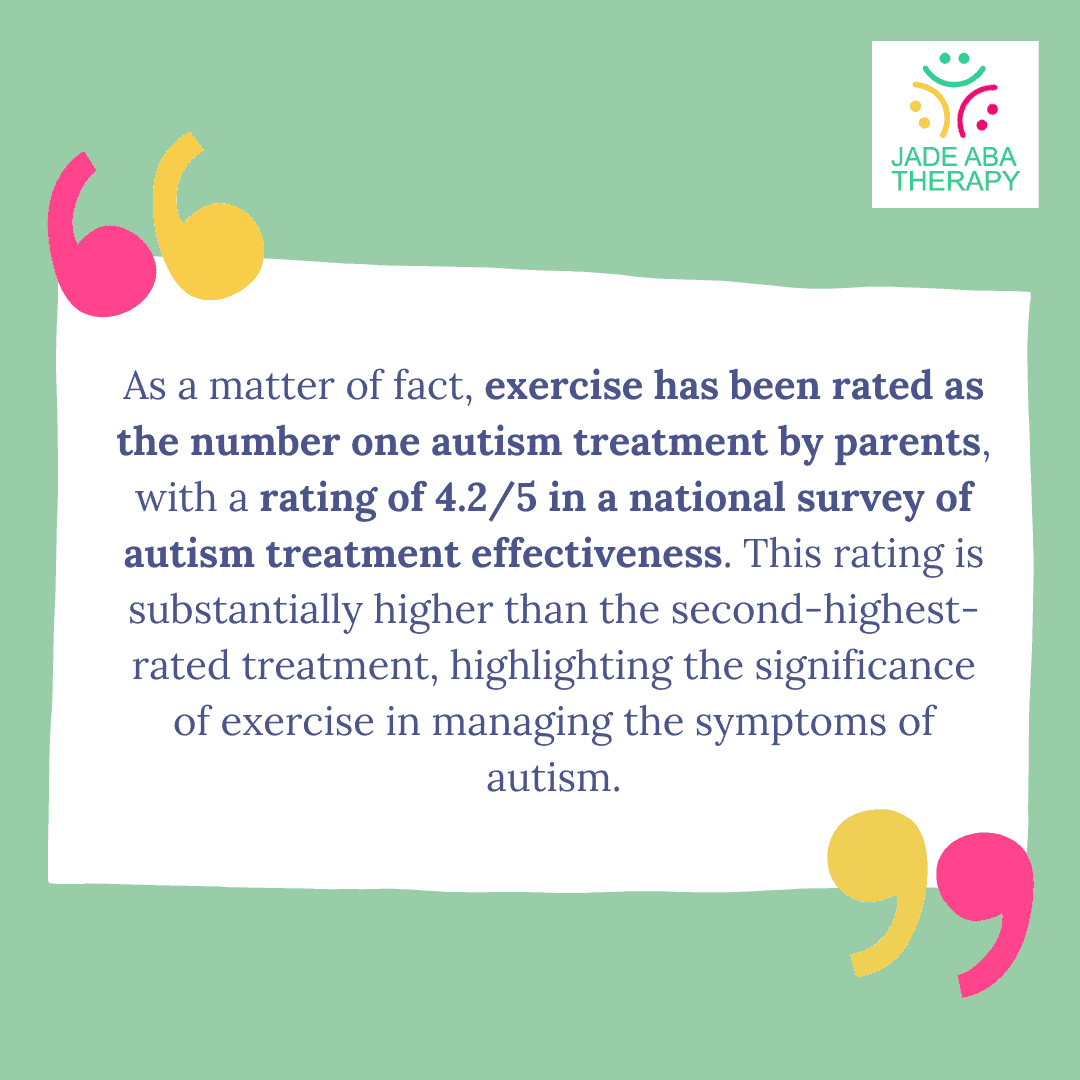Engaging in regular exercise can have numerous benefits for individuals with autism. Exercise not only promotes physical fitness but also contributes to various aspects of overall well-being.
But how exactly can exercise benefit individuals with autism? Let’s find out!

Improves Muscular Strength and Endurance
Youth on the autism spectrum often exhibit poorer muscular strength and endurance compared to their typical peers. However, exercise programs designed specifically for individuals with autism have shown significant gains in these areas.
By participating in activities like exergaming, aquatic exercise, and horseback riding, individuals with autism can improve their muscular strength and endurance.
These activities provide opportunities for individuals with autism to engage in enjoyable physical movements, which can lead to improvements in their muscular strength and endurance.
Regular exercise also contributes to overall physical health and can help reduce the risk of developing health conditions associated with a sedentary lifestyle.

Enhances Skill-Related Fitness
Skill-related fitness encompasses various physical attributes that are essential for participating in physical activities and social opportunities. For individuals with autism, engaging in different types of physical activities has been found to improve skill-related fitness.
Participating in these activities helps develop and enhance their fundamental motor skills, coordination, balance, and agility. These skills are crucial for engaging in physical activities and social interactions that require basic physical abilities like running, throwing, and catching.
The encouraging findings from studies on the benefits of exercise for individuals with autism highlight the importance of incorporating physical activities into their routines.
By engaging in exercise programs tailored to their needs, individuals with autism can experience improvements in muscular strength, endurance, and skill-related fitness. These positive outcomes can contribute to their overall physical and mental well-being, promoting a healthier and more fulfilling life.

Develops Social and Communication Skills
Exercise programs specifically designed for individuals with autism have also shown significant gains in social and communication skills.
Activities such as horseback riding, group play, running/jogging programs, and exergaming have been found to be particularly effective. These activities provide opportunities for individuals with autism to interact with others, develop social connections, and practice communication skills in a structured and supportive environment.
Engaging in exercise-based interventions allows individuals with autism to improve their ability to understand and interpret non-verbal cues, enhance their social interactions, and develop meaningful relationships.
These improvements in social and communication skills can have a positive impact on their overall quality of life and increase their participation in social settings.
Addresses Behavioral Challenges
Exercise has been shown to have a positive impact on addressing behavioral challenges in individuals with autism. Vigorous physical activities for more than 20 minutes have been found to decrease hyperactivity, aggression, and stereotypical behaviors among individuals on the spectrum.
These behaviors can often be barriers to social engagement and learning opportunities.
Through exercise, individuals with autism can channel their energy in a productive and structured manner, reducing the likelihood of engaging in disruptive or challenging behaviors. Regular exercise routines provide a predictable and stable environment, which can help individuals with autism feel more grounded and regulated.

Engaging in regular physical activity can positively impact behavioral outcomes in individuals with autism. Exercise provides a structured and predictable environment, which can help individuals with autism feel more stable and balanced.
This sense of structure and predictability can contribute to the overall well-being and emotional regulation of individuals with autism.

Improves Sensory Processing
For individuals with autism, sensory processing difficulties are common. Exercise can play a crucial role in improving sensory processing by providing sensory input and helping individuals regulate their sensory responses.
Physical activities like running, jumping, or swimming can stimulate the senses and promote better sensory integration.
Research suggests that addressing motor deficiencies and increasing physical activity levels through exercise can have a significant impact on the core social communication impairments of individuals with autism. By providing greater opportunities for socialization, exercise can enhance social skills, attentional focus, and motor performance.
Incorporating exercise into the routine of individuals with autism not only helps manage obesity but also has broader benefits in terms of behavior regulation and sensory processing. By promoting physical activity, individuals with autism can experience improved overall well-being and better management of their symptoms.

Promotes Better Learning
Lastly, exercise was shown to have a positive impact on learning and academic performance for individuals with autism. Regular physical activity has been found to enhance concentration, attention, and memory, making it easier for individuals to acquire and retain new information.
This is particularly important for individuals with autism, who may face challenges in these areas.
Incorporating exercise into the daily routine of individuals with autism can provide them with an opportunity to engage in active learning. Physical activity can be combined with educational activities, such as incorporating movement into math or language lessons. The combination of exercise and learning creates a multisensory experience that enhances information processing and retention.
Moreover, exercise can help reduce hyperactivity and improve self-regulation, allowing individuals with autism to focus more effectively on their academic tasks. By reducing stress and anxiety, exercise creates a conducive environment for learning and facilitates better cognitive outcomes.
By recognizing the cognitive benefits of exercise, parents, caregivers, and educators can incorporate physical activity into the daily routine of individuals with autism. This integration can help enhance cognitive function, promote better learning, and improve overall cognitive outcomes, among others.
That said, it is important to consult with healthcare professionals and specialists to develop an exercise plan that suits the needs and abilities of individuals with autism to ensure a safe and effective approach.